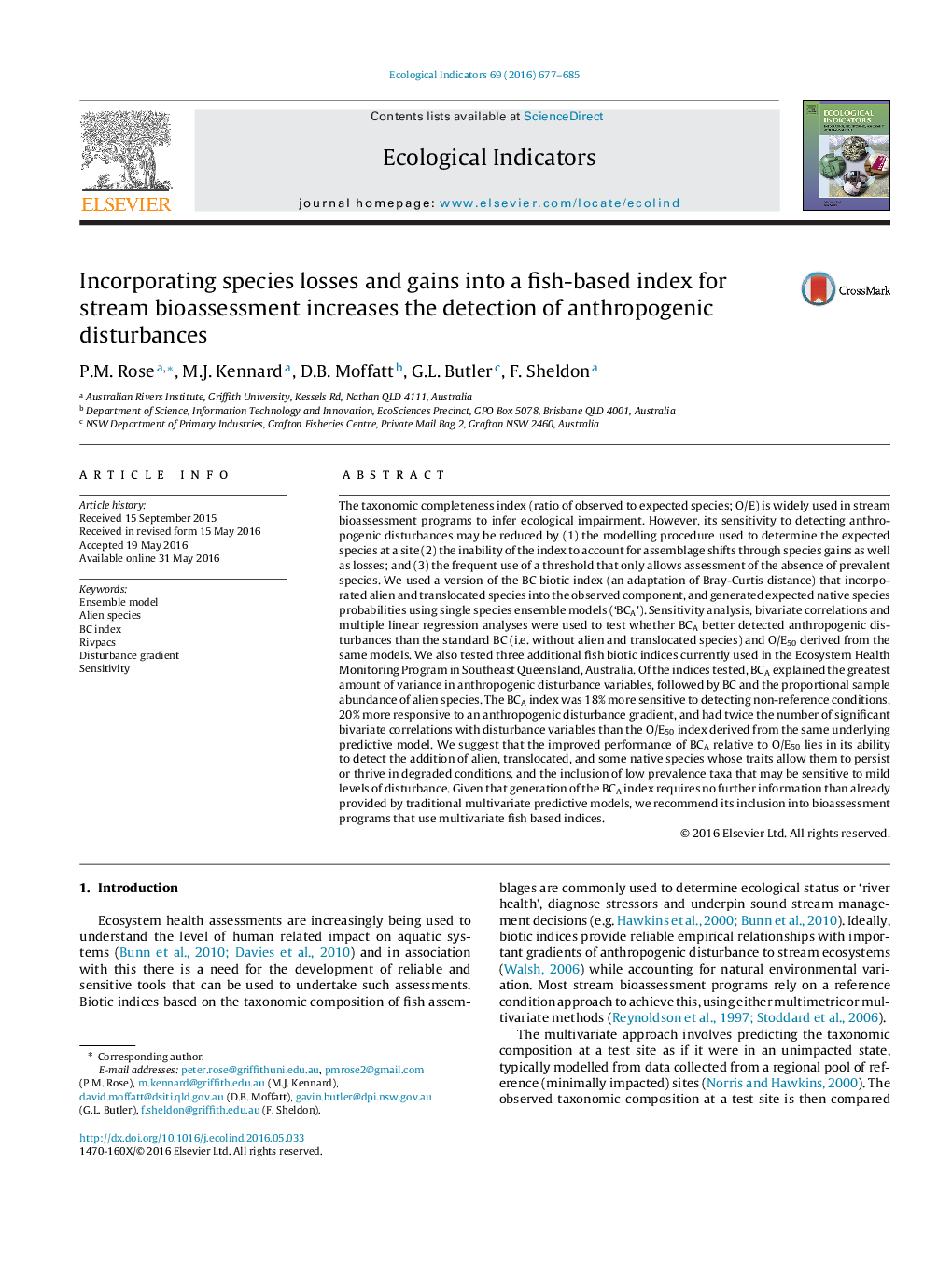| کد مقاله | کد نشریه | سال انتشار | مقاله انگلیسی | نسخه تمام متن |
|---|---|---|---|---|
| 6293319 | 1617133 | 2016 | 9 صفحه PDF | دانلود رایگان |
عنوان انگلیسی مقاله ISI
Incorporating species losses and gains into a fish-based index for stream bioassessment increases the detection of anthropogenic disturbances
ترجمه فارسی عنوان
در نظر گرفتن تلفات و زیان گونه ها به یک شاخص ماهی مبتنی بر ارزیابی جریان زیستی، تشخیص اختلالات انسان شناسی را افزایش می دهد
دانلود مقاله + سفارش ترجمه
دانلود مقاله ISI انگلیسی
رایگان برای ایرانیان
کلمات کلیدی
موضوعات مرتبط
علوم زیستی و بیوفناوری
علوم کشاورزی و بیولوژیک
بوم شناسی، تکامل، رفتار و سامانه شناسی
چکیده انگلیسی
The taxonomic completeness index (ratio of observed to expected species; O/E) is widely used in stream bioassessment programs to infer ecological impairment. However, its sensitivity to detecting anthropogenic disturbances may be reduced by (1) the modelling procedure used to determine the expected species at a site (2) the inability of the index to account for assemblage shifts through species gains as well as losses; and (3) the frequent use of a threshold that only allows assessment of the absence of prevalent species. We used a version of the BC biotic index (an adaptation of Bray-Curtis distance) that incorporated alien and translocated species into the observed component, and generated expected native species probabilities using single species ensemble models ('BCA'). Sensitivity analysis, bivariate correlations and multiple linear regression analyses were used to test whether BCA better detected anthropogenic disturbances than the standard BC (i.e. without alien and translocated species) and O/E50 derived from the same models. We also tested three additional fish biotic indices currently used in the Ecosystem Health Monitoring Program in Southeast Queensland, Australia. Of the indices tested, BCA explained the greatest amount of variance in anthropogenic disturbance variables, followed by BC and the proportional sample abundance of alien species. The BCA index was 18% more sensitive to detecting non-reference conditions, 20% more responsive to an anthropogenic disturbance gradient, and had twice the number of significant bivariate correlations with disturbance variables than the O/E50 index derived from the same underlying predictive model. We suggest that the improved performance of BCA relative to O/E50 lies in its ability to detect the addition of alien, translocated, and some native species whose traits allow them to persist or thrive in degraded conditions, and the inclusion of low prevalence taxa that may be sensitive to mild levels of disturbance. Given that generation of the BCA index requires no further information than already provided by traditional multivariate predictive models, we recommend its inclusion into bioassessment programs that use multivariate fish based indices.
ناشر
Database: Elsevier - ScienceDirect (ساینس دایرکت)
Journal: Ecological Indicators - Volume 69, October 2016, Pages 677-685
Journal: Ecological Indicators - Volume 69, October 2016, Pages 677-685
نویسندگان
P.M. Rose, M.J. Kennard, D.B. Moffatt, G.L. Butler, F. Sheldon,
